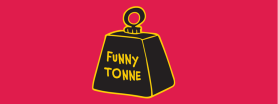Photo: Jiroe on Unsplash.
Organisations can struggle with language and policy surrounding gender diversity, yet the tools and information to educate and improve exist. As a member of the LGBTQ community, but a cis-gendered queer woman, I sought out some dialogue and recommendations from trans, non-binary, and gender diverse folks as to how employers can champion the cause for gender diversity more efficiently.
1. Create opportunities
Raina Peterson is a dancer-choreographer, writer and theatre-maker who said being an ally means prioritising who you employ.
‘Create opportunities for trans people. We face workplace discrimination, we struggle with employment and money, reduced opportunities etc. To offset this, it’s important to create opportunities for trans people, and prioritise us as participants and employees, seek us out, give us positions of power,’ they said.
2. Organise training
Educating staff on how to work with trans, non-binary and gender diverse people to cover things such as names, pronouns and access requirement is the kind of training your organisation can do to effectively work with Trans and Gender Diverse People (TGD).
Jinghua Qian, a gender-fluid writer for ArtsHub and co-founder of Myriad, a TGD arts collective, offered this advice: ‘Organise training; talk about it; don’t make the person from the marginalised group do all the work in making your organisation better’.
3. Develop a framework
Archie Boulter, an LGBTIQA+ advocate and Co-CEO/Founder of Queer Town said putting HR processes in place for gender diverse individuals is important in the workplace.
‘If an employee experiences discrimination on the basis of their sex or gender identity, what processes are in place to manage this? Are employees aware of this process? Having a framework in place ahead of time provides security and accountability processes for both employees and employers during what is likely to be a stressful and emotional time.’
4. Introduce pronoun badges
Suggesting all staff wear their pronouns as name tags or stickers as part of introductory meetings or events can help normalise the process of not presuming someone’s gender identity and make trans, non-binary and gender diverse people feel more comfortable and included, so the impetus is not upon them to disclose and/or educate.
5. Make your support visible
Set up your workplace with messaging that makes TGD people feel supported. Boulter suggested the following advice:
‘Managers can scout the work environment for opportunities to increase TGD and NB (non-binary) inclusivity, such as: personal details forms that provide space to elect gender identity and pronouns, gender neutral bathrooms, staff pronoun badges, posters, rainbow pins, and lanyards,’ they said. ‘Visible allyship is a powerful way to reinforce workplace values, set the tone for workplace culture and instil confidence in TGD and NB (Non-Binary) employees.’
6. Speak up
If you hear a colleague misgendering a TGD person in the workplace, then having a conversation with that person to correct their behaviour can lead to change.
Writer, artist and community organiser of the Afghan diaspora Bobuq Sayed said: ‘Correcting misgendering and transphobic behaviour should be the responsibility of cisgender employees, especially when they take place in public settings. This can involve taking the individual aside and explaining that their behaviour is inappropriate and why.’
Boulter adds:
‘I regularly experience misgendering in the workplace through the use of incorrect pronouns or gendered language, such as “man”, “bro”, “sir”, “gentleman” and “guy”. These are always disheartening and hurtful experiences and it can often feel too uncomfortable or too dangerous to speak up. In these instances, allies have an opportunity to walk the walk and demonstrate their allyship by gently correcting the error or pulling the perpetrator aside afterward to catch them up to speed.’

Archie Boulter. Image supplied.
7. Re-evaluate your organisation’s messaging
If someone were to look at your company’s messaging on their website, would it come across as supportive to a gender diverse community? Qian said a company can improve their messaging by adopting these tips:
‘Look at everything your organisation is putting out into the world: e.g. do your forms and booking engines demand that people select “Mr” or “Ms”? Think about how the language and imagery you use could be more inclusive,’ they said. ‘When I’m thinking about working with an organisation – whether that’s applying for a job, or pitching a story, or accepting an invitation to speak on a panel – I look at their website and social media to see what they say about gender, race, disability etc. That tells me what to expect.’
8. Install gender neutral toilets
Having gender neutral toilets on site or in your organisation provides a message of inclusivity for your staff and/or patrons at an event.
In Clear Expectations, a set of guidelines outlining the best ways for institutions, galleries and curators to work with trans, non-binary and gender diverse artists, authors Spence Messih and Archie Barry write:
‘Replacing signage such as ‘women’ and ‘men’ with an image of a urinal or a toilet, or simply the word ‘toilets’ or ‘bathrooms’ ensures that people can use the facilities that best align with their needs and identities. Sanitary bins and baby change facilities should be available in all bathrooms.’
9.Re-consider public announcements
You can create a safe environment by using gender neutral and inclusive language in your messaging, which doesn’t assume anything about the person. For voiceover announcements, instead of using ‘Hello, ladies and gentlemen’, you might consider something more neutral e.g. ‘Welcome everyone’.
10. Embrace work unfamiliar to you
Maddee Clark, a Yugambeh freelance writer and curator, has previously curated work that has been censored and says having an open mind about work unfamiliar to you can support gender diverse artists.
‘I’d love to see arts practice expand to embrace more complex, “risky” forms of trans art and expression, reject the neater and more feel-good institutional models of inclusion,’ Clark said.
11. Listen
Finally, Qian said listening to your colleagues is the most important way that you can support TGD people in the workplace.
‘Remember that not all trans and gender-diverse people have the same needs and preferences, or the same way of understanding themselves. Do your own research but also listen to the people you’re working with rather than trying to fit them into a role you read about,’ they said.
‘Equity and inclusion is something your organisation needs to think about now (or yesterday!), not after you come into contact with someone who’s trans or genderqueer or non-binary,’ Qian concludes.





